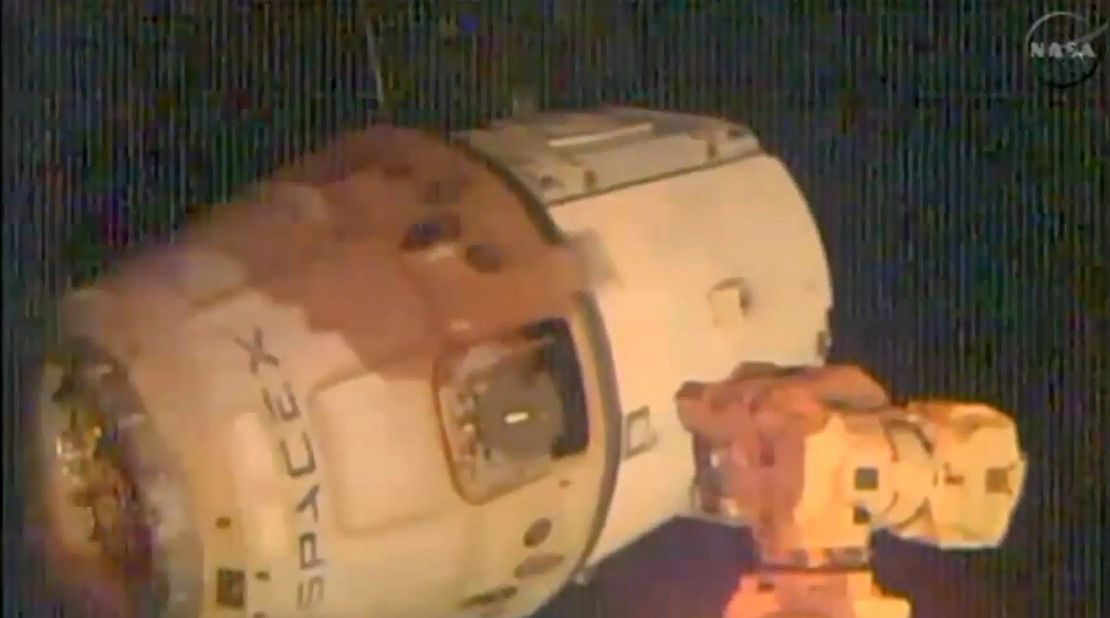Story highlights
SpaceX's Dragon successfully returns from fourth ISS resupply mission
NASA: Mission carried critical research for human space exploration
Dragon delivered 3-D printer and device to measure Earth's ocean winds
Next mission could come before year's end
SpaceX’s Dragon spaceship splashed down Saturday in the Pacific Ocean, returning from a four-week resupply mission to the International Space Station and bringing back a valuable payload of potentially groundbreaking experiments.
Dragon, an unmanned spacecraft, successfully came down about 300 miles west of Baja California just after 3:30 p.m. EST, carrying a return load weighing 3,276 pounds, NASA said in a press release.
Dragon was expected to be hauled to a port near Los Angeles where some of the cargo would be removed almost immediately, the space agency said, while the rest of the research aboard the rocket will return to SpaceX’s facility at McGregor, Texas, for further processing. SpaceX is a private company that has contracted with NASA to fly missions to the ISS since NASA retired its shuttle fleet in 2011.
“This mission enabled research critical to achieving NASA’s goal of long-duration human spaceflight in deep space,” said Sam Scimemi, director of the International Space Station division at NASA Headquarters.
One of the experiments scientists are hoping yields information to help further deep space exploration involves mice.

It’s called the Rodent Research-1. Part of that experiment has returned aboard the Dragon. The study focuses on “ongoing research on how microgravity affects animals, providing information relevant to human spaceflight, discoveries in basic biology and knowledge that may directly affect human health on Earth, NASA said.
The Dragon also delivered a 3-D printer to the ISS during its mission, to test the ability to produce parts cheaply and on demand, and a device called the ISS-RapidScat that will measure the winds on the Earth’s oceans for climate and weather research.
“The delivery of the ISS RapidScatterometer advances our understanding of Earth science, and the 3-D printer will enable a critical technology demonstration,” Scimemi said.
Also critical to extended space travel is a dependable food supply. A study on arugula plant growth returned aboard the Dragon. The research hopes to determine the impact of various nutrients and microgravity on seedlings from the leafy vegetable that are grown in space. Scientists hope the experiment will help them learn the best ways to grow plants in space with the highest nutritional content.
The Dragon delivered a total of 255 science experiments to the ISS during its fourth of 12 planned SpaceX resupply missions to the space station through 2016.
The next SpaceX flight is set to lift off sometime after December 1. It will also deliver crew supplies and cargo to the International Space Station, including CATS, the Cloud-Aerosol Transport System. CATS is a laser instrument that will measure clouds and particles in the atmosphere, including pollution, dust and smoke.
NASA recently announced it was awarding $6.8 billion contracts to SpaceX and Boeing to shuttle cargo and astronauts to and from the ISS. Since NASA’s space shuttle program was retired in 2011, astronauts have been hitching rides on the Soyuz spacecraft, at a cost of $70 million per seat.
Both Boeing and SpaceX’s crafts will go through a certification process first. The target date to begin manned missions is 2017.
CNN’s Natalie Snedden contributed to this report.







